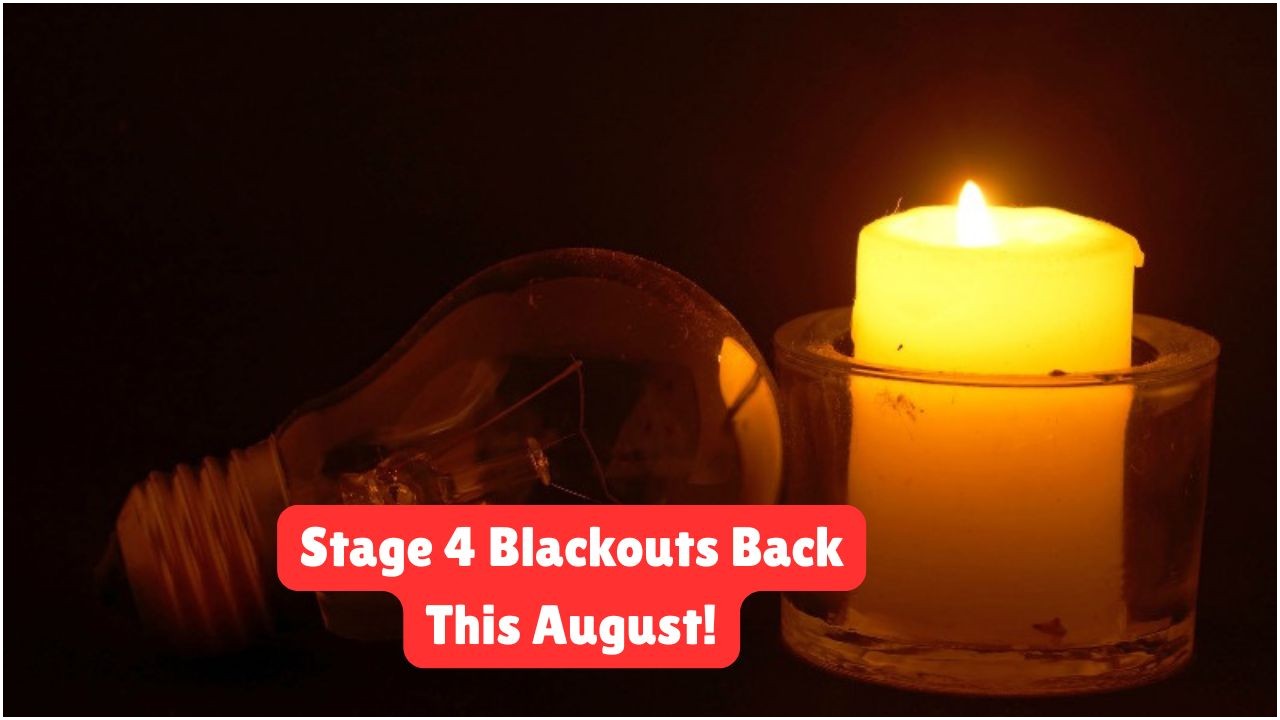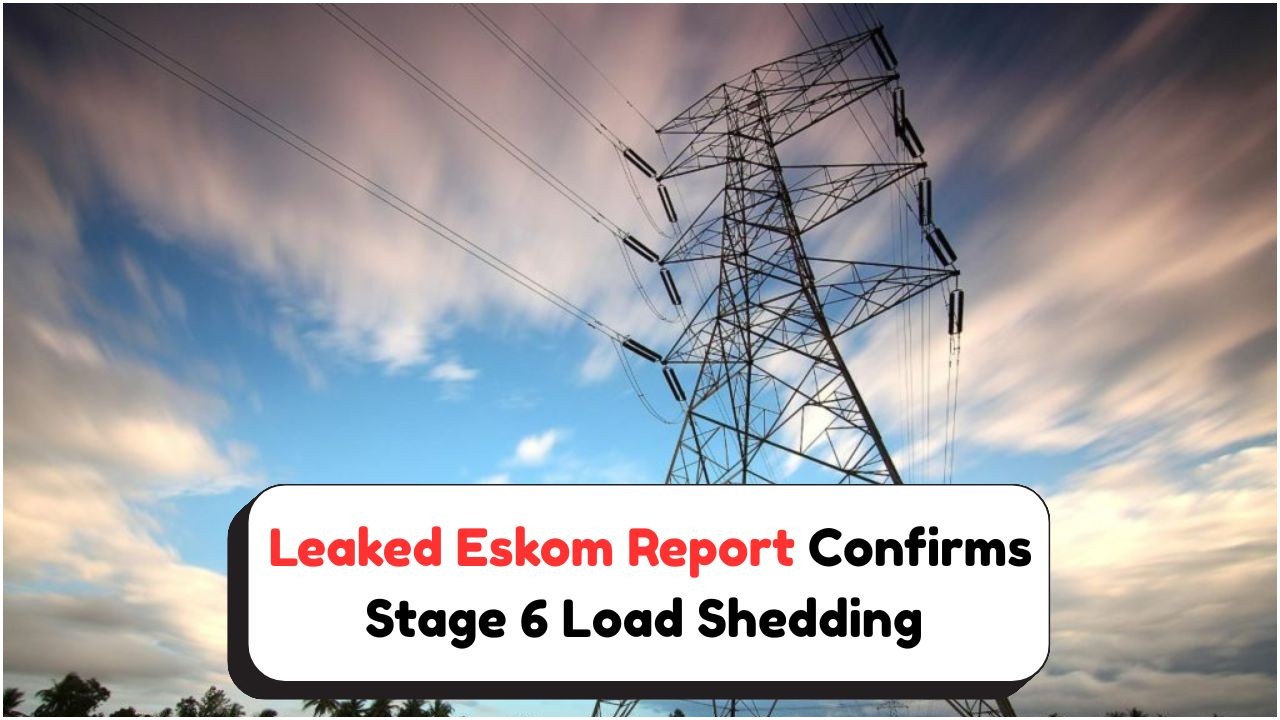Stage 4 Load Shedding in South Africa: As South Africa grapples with ongoing energy challenges, Stage 4 load shedding has once again become a reality. On August 27, residents across the country braced themselves for the scheduled power cuts aimed at balancing the national grid. This level of load shedding means that many areas experience power outages for up to 12 hours per day, impacting daily life and business operations. The situation has prompted widespread concern and discussions on how to mitigate the effects of these blackouts. With Eskom, the national power utility, implementing these measures, it’s crucial for South Africans to stay informed and prepared. From ensuring backup power solutions to optimizing energy use, there are various strategies citizens can adopt to cope with the disruptions.
Understanding the Impact of Stage 4 Load Shedding
Stage 4 load shedding is a critical measure that affects nearly every aspect of life in South Africa. This stage involves rotational power cuts that can last up to four hours at a time, several times a day. The primary objective is to prevent the national grid from collapsing, a scenario that would have dire consequences for the entire country. During this period, Eskom sheds approximately 4,000 MW from the grid, a significant amount of power that affects both residential and commercial sectors.
- Longer periods of power outages
- Increased reliance on generators and alternative power sources
- Businesses experiencing operational disruptions
- Increased costs associated with power backup solutions
- Potential loss of perishable goods
- Inconvenience in daily household activities
- Heightened security concerns due to lack of power
How to Prepare for Load Shedding
Preparation is key to mitigating the impact of load shedding. Homeowners and business operators can take several proactive steps to minimize disruption. Investing in a reliable backup power source, such as a generator or an inverter system, is a practical solution for maintaining essential services during outages. Additionally, ensuring that devices are fully charged before scheduled power cuts can help maintain communication and access to information. Implementing energy-saving measures, such as using LED lighting and energy-efficient appliances, can also reduce dependence on the grid.
| Preparation Step | Benefit |
|---|---|
| Install a generator | Ensures continuous power supply |
| Charge all devices | Maintains communication |
| Use LED lighting | Reduces energy consumption |
| Install solar panels | Provides a renewable energy source |
| Plan activities around schedule | Maximizes productivity |
Monitoring Load Shedding Schedules
Staying informed about load shedding schedules is crucial for planning daily activities. Eskom provides updated schedules through their website and mobile app, offering citizens the ability to check when their area will be affected. By knowing the schedule in advance, residents can plan to complete essential tasks before the power goes out. This proactive approach helps reduce the inconvenience caused by unexpected power cuts.
 Discover the SASSA Child Support Grant Payment Dates for August 2025 – Full Schedule Inside
Discover the SASSA Child Support Grant Payment Dates for August 2025 – Full Schedule Inside
- Check Eskom’s website regularly
- Download the EskomSePush app
- Set reminders for scheduled load shedding times
- Inform family and friends about the schedule
- Organize work and household chores around the schedule
- Stock up on non-perishable food items
- Ensure flashlights and candles are readily available
- Stay updated through local news outlets
Alternative Energy Solutions for Homeowners
| Solution | Advantages |
|---|---|
| Solar Power | Renewable and reduces electricity bills |
| Inverter Systems | Backup power for essential devices |
| Battery Storage | Stores energy for use during outages |
| Gas Appliances | Reduces reliance on electricity |
| Generator | Provides immediate power backup |
Community Initiatives and Support
Community involvement plays a vital role in managing the challenges of load shedding. Many neighborhoods have established support networks to share resources and information. These initiatives include community-run power stations, where residents can charge essential devices, and local WhatsApp groups that disseminate real-time updates and tips on coping strategies.
- Establish community charging stations
- Share resources like generators and inverters
- Create neighborhood communication groups
- Organize community events during daylight hours
- Support local businesses affected by power cuts
- Encourage renewable energy adoption
- Participate in local forums and discussions
Government’s Role in Addressing Load Shedding
The South African government has been actively seeking solutions to the ongoing energy crisis. Efforts include investing in renewable energy projects, improving infrastructure, and encouraging energy conservation. These initiatives aim to create a more sustainable and reliable energy system for the future. Collaborating with private sectors and international partners is also part of the strategy to bolster energy security.
- Invest in renewable energy sources
- Enhance power grid infrastructure
- Promote energy-saving practices
- Foster collaboration with private sectors
FAQ Section
What causes load shedding in South Africa?
- Load shedding is caused by insufficient power supply to meet the demand due to aging infrastructure, maintenance issues, and limited electricity generation capacity.
How does Stage 4 load shedding affect businesses?
- Businesses may face operational disruptions, increased costs, and potential loss of revenue due to prolonged power outages.
What can individuals do to minimize the impact of load shedding?
- Individuals can invest in backup power solutions, optimize energy usage, and plan activities around load shedding schedules.
Are there any long-term solutions to South Africa’s energy crisis?
- Long-term solutions include developing renewable energy sources, upgrading infrastructure, and promoting energy conservation.
How can I check if my suburb is affected by the August 27 load shedding?
Visit the power utility's website or contact them for details.
How can residents prepare for Stage 4 load shedding on August 27?
Stock up on essentials and charge devices beforehand.








